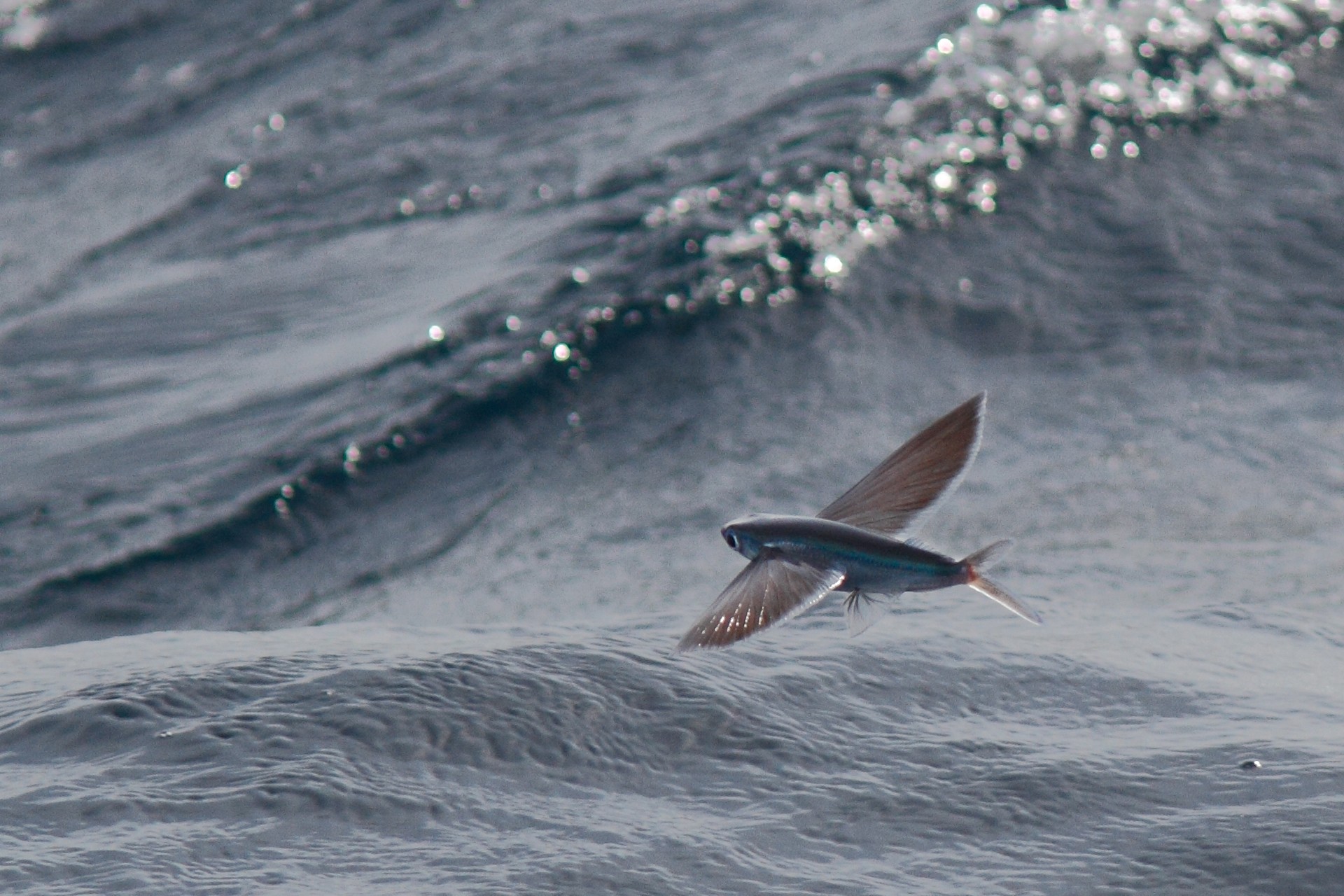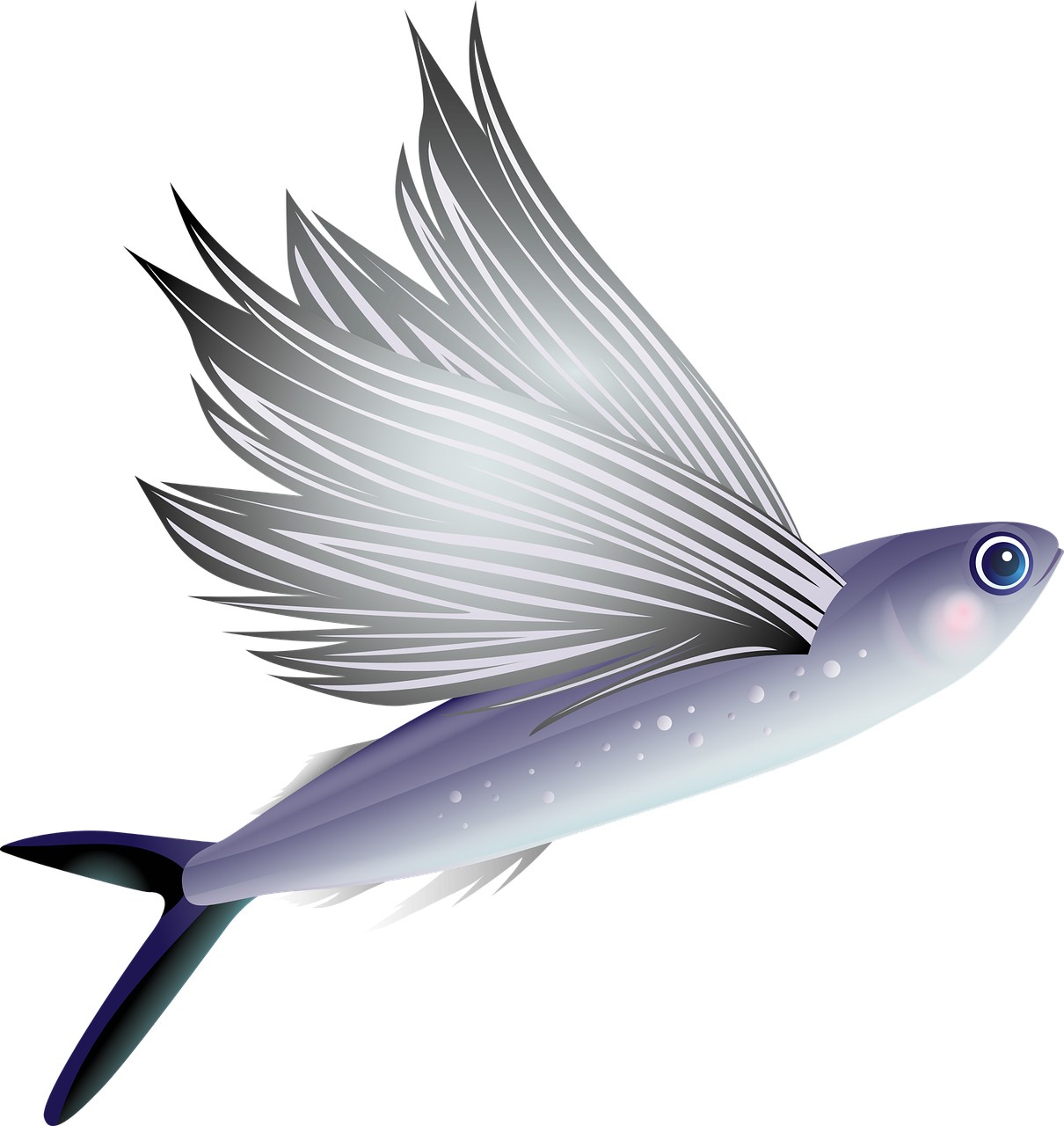The next time you’re out at sea, look down below the bow of your boat as you cruise. If you’re lucky, you might see what look like little silvery-blue darts shooting out of the water, and then gliding away expertly in a beautiful arc. Amazingly, these creatures are actually fish – fish that can fly.
Flying fish are not just one kind of fish, they are a whole family of over sixty kinds. Evolution has given them all the ability to do something you wouldn’t imagine a fish could normally do – take to the air. They do this with their very enlarged fins, the front pair of which are so long and wide that they can be spread out like wings, much like the ‘wing-suits’ that humans managed to design only very recently, or like Batman’s cape. Couple these fins with a very powerful tail that can launch the fish into the air, and you have the perfect design for a creature that can traverse water and air with equal ease. And did you know? Their design was even studied as a model for early airplanes!
It is not hard to notice how these amazing fish put their abilities to use. When taking to the air, flying fish move their tail very vigorously, propelling themselves out of the water (if you look closely, you can see the tail pattering on the water’s surface for a split second). Then, spreading their fins, they glide away in the direction of their choosing, before plunging back into the sea. They usually glide distances of 50 to 100 metres at a time, over about five seconds or so. But there are records of far more impressive flights too – the flight time record is 45 seconds (performed by a flying fish, later nicknamed “Icarfish”, off Japan, probably as a hat tip to the legend of Icarus), and flight distance records have gone up to almost half a kilometre. That’s the length of five football fields – incredible, right?
But why would fish want to fly anyway? Well, flying fish are pelagic in habit. That is, they live in the uppermost waters of the open ocean. This is a place full of larger fish, dolphins, and other creatures that like to have flying fish on their menu, and flight is a promising way to escape the reach of these hungry predators. Flying fish fly when startled, which is why they are most easily spotted in flight when a boat passes too close to them.
But for flying fish in many parts of the ocean, flying out of reach of their aquatic enemies is not the end of their problems – because they then end up having to dodge the waiting beaks of seabirds, who love the idea of food flying straight into their mouths.
Flying fish have always been a favourite of people. They are valued as seafood in many parts of the world, and in some cultures, they are also important symbols. Barbados, in the Caribbean, is one country that is truly obsessed with these fish. You’ll find flying fish on Barbadian coins, stamps, their coat of arms… the country has even fought with its neighbour, Trinidad and Tobago, over flying fish in their waters.
So the next time you watch fish in the air, you know you’ve caught a quick glimpse of a creature that is not just a landmark in nature’s amazing course of history, but one that’s had a lasting impression on us humans as well.
Other stories in this Guest Editor package:
Guest Editor Diaries: Of Poachers And Flying Fish: 10-year-old Aarya Mehta assigns stories to the NiF team.
Oh Deer! The Thrill Of The Hunt: Editor Aarya Mehta writes about when a tigress set her sights on a deer for dinner, and they all watched in.
A Cruel Trade: Prerna Bindra tries to explain why poachers poach and how it's driving our wildlife to extinction.
Our Perilous Poaching Problem: Bijal Vachharajani lists out the books you should arm yourself with.



